Reading French wine labels can seem hard at first, but it gets much easier once you know what to look for. France often labels by place, not grape. Learning how to read these labels opens the door to many great wines. With a few basics, you can move from guessing to choosing with confidence, finding the grape mix, quality level, and style that make each bottle stand out. This guide walks you through the parts of a French wine label so you can shop with ease.
French labels focus on origin more than grape variety. This idea links to “terroir,” meaning how soil, climate, slope, and people shape a wine. Once you learn how regions relate to grapes and style, the label tells you a lot about what’s in the bottle. Master a few key regions and grapes, and the label becomes a clear guide.

What Information Appears on French Wine Labels?
French labels carry a lot of detail. From producer and place to vintage and ABV, each line tells part of the story. Knowing these pieces will really help you pick bottles you’ll enjoy.
Producer and Bottler Details
The producer’s name usually stands out, sometimes with a crest or a drawing of the château, especially in Bordeaux. A producer can be a single grower, a firm with many winemakers, or a business that buys wine and bottles it under its own brand. Phrases like “Mis en bouteille au château” or “Mis en bouteille au domaine” mean the wine was bottled at the estate. That hints at tighter quality control because the same team handled the grapes through to the bottle. You may also see “mis en bouteille à la propriété” (bottled at the property), “mis en bouteille dans la région de production” (bottled in the region), or “mis en bouteille dans nos caves” (bottled in our cellars).
Think of the producer like the make of a car. For example, Edouard Delaunay makes wines from single vineyards with a shared house style, much like all Jeeps share some traits. If a wine isn’t estate-bottled, it may be bottled by a “Négociant,” a merchant who buys grapes or wine and sells it under their label. A “Vigneron” is a grower-winemaker who uses only their own grapes.
Appellation and Region
The appellation is the most important line on a French label. It tells you where the wine comes from and points to allowed grapes, methods, and expected style. France names wines by place, not grape, which fits a country with 200+ grapes and a strong blending culture. The more precise the place, the higher the rank in the French system, which we’ll cover shortly.
For example, a bottle might say “Appellation Bordeaux Contrôlée” for a broad regional blend, or “Appellation St-Èmilion Contrôlée” for a wine from a well-defined district in Bordeaux. Rules tied to each appellation protect traditional methods and make the wine’s origin clear. The system is built around terroir: soil, climate, and local practice all shape the wine’s identity.

Sub-regions and Vineyards
Looking closer, labels often mention sub-regions, villages, or a single vineyard. You might see a “lieu-dit,” a named plot. In Burgundy, where the land’s character has a very strong influence, tiny changes in site can shift flavor and texture. Burgundy ranks quality by land, not just producer.
You may see “Hautes-Côtes de Nuits,” a village within the larger Côtes de Nuits area. Vineyard names can be even more precise, like “Les Rouards,” a single plot. These details on the front label usually signal higher quality and a sharper expression of place. In Burgundy, “Premier Cru” wines come from ranked single vineyards, while “Grand Cru” comes from top plots that sit at the very top of the quality ladder.
Vintage Year
The vintage (“Millésime”) is the year the grapes were picked, not bottled. This is very important because weather changes year to year and can shape quality and style. Great vintages can boost a wine’s standing and aging life.
Listing a vintage is optional for some wines, but if shown, at least 85% must come from that year. The date may be front and center or printed on the foil. Some areas have aging rules, so a wine released in 2025 might carry a 2020 vintage after time in barrel or bottle.
Grape Varieties
French labels often hint at grapes through place. Still, you’ll sometimes see grapes listed, especially on IGP and Vin de France wines or on back labels. For example, red Bordeaux is usually a blend of Cabernet Sauvignon, Merlot, and Cabernet Franc. Burgundy red is Pinot Noir; Burgundy white is Chardonnay.
If a grape is named, it usually makes up at least 85% of the wine. If several grapes are listed, they make up the full blend. This clearer grape info helps buyers who are learning the French regions.
Alcohol Content
French wine labels must show ABV (alcohol by volume) as a percentage. This gives a sense of weight and power. There’s a small leeway: up to 14% ABV, the number can be within 1.5% of the true value, as long as the real value stays under 14%. So a wine marked 12% could be as high as 13.5%.
ABV can vary a lot by vintage, ripeness, and style. Red table wines often run from 8% to 18%, with many between 10% and 13%. Whites are often a bit lower. Use this to judge body and food matches.
French Wine Classification Systems Explained
France uses a detailed ranking system to protect origin and set standards. Once you learn the levels, the label becomes a handy guide to place and style.
AOC (Appellation d’Origine Contrôlée)
The Appellation d’Origine Contrôlée (AOC), now aligned with the EU term AOP (Appellation d’Origine Protégée), is the highest and most tightly controlled level. Started in 1936 by Baron Pierre Le Roy, it ties a wine to a defined area with strict rules on grapes, farming, and minimum standards. It guarantees where the wine comes from and how it was made, closely linked to terroir.
Precision matters. A broad “Appellation Bordeaux Contrôlée” covers a wide region, while “Appellation St-Èmilion Contrôlée” points to a smaller area with tougher rules. France has 300+ AOC wine appellations, and similar systems exist for foods like cheese and products like lavender oil.
IGP (Indication Géographique Protégée)
IGP sits below AOC/AOP. It used to be called Vin de Pays. IGP covers larger zones with looser rules. Producers get more freedom to try grapes or methods not allowed under AOC rules.
IGP labels often list the grape variety along with the zone. This helps buyers who don’t yet know all the regional grape norms. Quality can still be high, and value can be strong.
Vin de France (Table Wine)
Vin de France is the broadest category. Grapes can come from anywhere in France, and wines can blend across regions. Rules are light, so winemakers have the most freedom.
Grapes are often named on the label, which helps new drinkers. These wines tend to be simple and affordable, good for everyday drinking. Some top producers choose this category to avoid stricter rules, which can lead to creative and sometimes standout wines.
| Level | Area size | Rules | Grapes on label | Example |
|---|---|---|---|---|
| AOC/AOP | Small, precise | Very strict | Rare on front | Saint-Émilion AOC |
| IGP | Wider zone | Moderate | Often listed | IGP Pays d’Oc |
| Vin de France | Anywhere in France | Few rules | Usually listed | Vin de France Chardonnay |

How French Wine Labeling Differs from Other Countries
France stands out from many New World regions by putting place first. This comes from long tradition and a belief that site shapes the wine as much as grape.
Why Regions Matter More Than Grape Varieties
Many countries lead with the grape on the front label, like “California Cabernet Sauvignon.” In France, the place often tells you the grape. A red Burgundy is Pinot Noir. A white Burgundy (like Chablis) is Chardonnay. A red Bordeaux is usually a mix of Cabernet Sauvignon, Merlot, and Cabernet Franc, but the label says “Bordeaux” or a more exact area.
This approach reflects faith in terroir-the land, climate, and local ways. With so many grapes and blends, place gives a fuller picture than a grape name alone. Learning where wines come from helps you predict style and quality.
Labeling for Blends and Single Varietals
Because place leads, labels may not say “blend” or “single grape.” The region gives the clue. Bordeaux is known for blends. Burgundy is mostly single-varietal wines (Pinot Noir or Chardonnay). IGP and Vin de France bottles, and many back labels, often name grapes to help broader audiences.
Sparkling wines use clear terms for grape makeup. “Blanc de Blancs” means a white sparkler from 100% white grapes (usually Chardonnay in Champagne). “Blanc de Noirs” means a white sparkler from 100% black grapes (Pinot Noir and/or Pinot Meunier in Champagne). These terms give a direct view of the grapes, an exception to the place-first habit.
Common French Wine Terms and Label Phrases
French labels use certain words again and again. Learning these terms makes reading faster and smarter.
Château and Domaine
These words point to the estate. A “Château” (often seen in Bordeaux) means the grapes are grown, and the wine is made and aged on the property. It doesn’t have to be a grand castle; it’s about the winery site.
“Domaine” (common in Burgundy and others) also means an estate with its own vineyards. Both words suggest the same team grew the grapes and made and bottled the wine, which often signals tighter control and quality.
Cru, Grand Cru, and Premier Cru
“Cru” means a recognized site or set of sites with high standing. The order and meaning shift by region, but the idea is similar: these are respected places.
- Grand Cru: The highest level for vineyards in places like Burgundy and Champagne. In Burgundy, Grand Cru plots make some of the best wines in tiny quantities. A Grand Cru label may show only the vineyard name, like “Musigny Grand Cru AOC.”
- Premier Cru (1er Cru): The second tier in Burgundy and Champagne. A Burgundy Premier Cru label lists both the village and the plot, such as “Vosne Romanée Premier Cru Aux Malconsorts AOC.” In Bordeaux’s Médoc and Graves, “Premier Cru” or “First Growth” refers to top-ranked estates.
Remember, terms shift by region. In Bordeaux, “Grand Cru Classé” applies to estates (châteaux). In Burgundy, it applies to vineyard plots.
Mis en Bouteille au Château or Domaine
This phrase signals estate bottling. “Mis en Bouteille au Château/Domaine” means the wine was bottled at the property. The producer grew the grapes, then made, aged, and bottled the wine on site. This often leads to a clearer expression of place and an easy trace of who did what, from vine to bottle.
Cuvée and Réserve
“Cuvée” means a specific blend or lot. It might be a choice mix, a special selection, or a batch made with a certain method. The word can suggest a special wine, but by itself it doesn’t guarantee higher quality. In Champagne, “Cuvée Prestige” points to the house’s finest blend, often from the first pressing.
“Réserve” in France is loosely used. It often hints at extra aging or better lots of fruit, but rules vary by producer and region. Treat it as a signpost, not a promise.
Decoding French Wine Labels by Region
Each French region has its own look, grapes, and rules. Knowing the basics by area helps you read labels faster and buy smarter.
Bordeaux
Bordeaux, one of the world’s most famous regions, is known for powerful red blends that age well. Labels often show the château name and sometimes “Grand Vin” for the main wine. Bordeaux has about 60 AOCs with several ranking systems. The best-known is the 1855 Classification for Médoc and Graves, which grouped estates into five “growths” based on price and fame. Note that this system doesn’t cover all of Bordeaux.
Red Bordeaux blends differ by bank. Left Bank wines lean on Cabernet Sauvignon, with Merlot and Cabernet Franc added. Right Bank wines lean on Merlot and Cabernet Franc. White Bordeaux blends often use Semillon and Sauvignon Blanc. Back labels may list grapes. “Supérieur” points to higher minimum alcohol and longer aging. Specific AOCs like Pauillac, Margaux, Saint-Émilion, and Pomerol usually mean tighter rules and, often, higher quality.
Burgundy
Burgundy labels center on vineyard plots (climats), not estates. Tiny changes in site can mean very different wines. Red Burgundy is Pinot Noir; white is Chardonnay. The quality ladder runs from regional wines (“Bourgogne Rouge”), to village wines (“Nuits-Saint-Georges AOC”), to “Premier Cru” (single ranked plots within a village, like “Vosne Romanée Premier Cru Aux Malconsorts AOC”), and up to “Grand Cru” (top single plots such as “Musigny Grand Cru AOC”).
Labels often say “Domaine” rather than “Château.” Small yields and high demand push prices up. Learning vineyard names is the best way to read quality and style here.

Champagne
Champagne labels clearly say “Champagne.” You’ll see sweetness terms, grape mix terms, and whether it’s vintage or not. “Millésime” marks a vintage Champagne from one harvest year, made only in standout years. Non-vintage blends aim for a house style each year.
| Term | Sweetness |
|---|---|
| Brut | Dry |
| Demi-Sec | Off-dry |
| Doux | Sweet |
“Blanc de Blancs” means 100% white grapes (usually Chardonnay). “Blanc de Noirs” means 100% black grapes (Pinot Noir and/or Pinot Meunier). Producer codes (e.g., N.M. for Négociant Manipulant) tell you whether the house buys grapes or grows its own. Some labels also mention “Grand Cru” or “Premier Cru” villages, which point to higher-rated grape sources.
Alsace
Alsace often lists the grape on the front, much like German wines. Common grapes include Riesling, Gewurztraminer, Pinot Gris, and Pinot Blanc. You’ll see “AC Vin d’Alsace” and “Alsace Grand Cru” for top vineyards.
Sweetness terms include “Sec” (dry), “Demi-Sec” (medium-dry), “Moelleux” (sweet), and “Doux” (very sweet). “Vendanges Tardives” (late harvest) means riper, sweeter styles. “Sélection de Grains Nobles” signals botrytized dessert wines.
Loire Valley
The Loire is wide and varied, with many AOCs. Whites dominate in many parts. Sauvignon Blanc leads in the east (Sancerre, Pouilly-Fumé). Chenin Blanc shines in the center (Vouvray, Savennières). Far west, Muscadet (Melon Blanc) makes crisp, saline whites.
Light reds come mainly from Cabernet Franc (Chinon, Bourgueil). Chenin labels may show sweetness (Sec, Demi-Sec, Moelleux, Doux). Sparkling “Crémant de Loire” is common. “Sur Lie” on Muscadet means aging on lees for extra texture.
Rhône Valley
The Rhône splits into North and South. The North focuses on Syrah reds (Côte-Rôtie, Hermitage) and some Viognier whites (Condrieu). Labels usually show the specific “Cru.”
The South leans on Grenache-based blends with Syrah and Mourvèdre (Châteauneuf-du-Pape, Gigondas). “Côtes du Rhône Villages” marks wines from named villages, a step up from plain “Côtes du Rhône.” “Vin Doux Naturel” are naturally sweet fortified wines from the area.
Provence
Provence is famous for pale rosé made mostly from Grenache, Cinsault, and Mourvèdre. Labels often show the regional AOC, like “Côtes de Provence.” Producer reputation matters a lot here.
Languedoc-Roussillon
This large southern region offers many styles and strong value. IGP wines are common, so grape names appear often. Reds use Grenache, Syrah, and Mourvèdre, plus international grapes like Merlot and Cabernet Sauvignon. Whites often use Chardonnay and Sauvignon Blanc. Named AOCs like Minervois or Corbières point to clearer styles.
Tips for Choosing French Wines by the Label
Walking the wine aisle is more fun when you can read labels with confidence. Use these tips to pick bottles that fit your taste and budget.
Judging Quality from Classification
Use the AOC/AOP ladder as your main guide. More precise places usually mean higher expected quality. Burgundy Grand Cru vineyards or a Premier Cru Classé château in Bordeaux sit at the top and often cost the most. Village-level wines can offer great value while showing a specific place. Regional wines are broad and often good entry points. Don’t overlook IGP and Vin de France; fewer rules can mean friendly prices and creative, tasty wines, often with grape names listed.
“Classé” terms often point to higher quality, but price and quality don’t always move together. There are many smart buys at lower tiers. Learn the framework, then trust your taste.
Spotting Reliable Producers
The producer name matters a lot. Strong estates (“Châteaux” or “Domaines”) build trust over time. Phrases like “Mis en Bouteille au Château/Domaine” point to estate bottling and tighter control. As you taste more, you’ll spot names that deliver steady quality and a clear house style.
Ask a shop pro for help or do a quick search if you’re unsure. Think of the producer as the brand within a place-first system. A skilled producer can lift even a broader appellation wine.

Understanding Vintage Impact
Vintage shapes style and quality, especially in places with changing weather. Strong years bring balance, depth, and aging life. Tough years can make lighter, earlier-drinking wines.
Check vintage charts for key regions. They can guide you on which years to drink now and which to keep. A great vintage may justify a higher price or more time in your cellar. Still, good winemakers can make tasty wines even in tricky years, so don’t write them off-especially from trusted producers.
Frequently Asked Questions about French Wine Labels
Here are quick answers to common questions that come up once you start reading French labels.
Should You Prioritize Region or Producer?
This is a classic chicken-or-egg question in French wine. The short answer: both. In places like Burgundy, the specific vineyard often comes first because terroir leads the style. The appellation gives you the base idea of what to expect.
Still, the producer matters a lot. A skilled team can make great wine in a modest year or lesser-known area. A weak team can waste a great site. In Bordeaux, the château often takes center stage in rankings, so the producer name can be even more central. The best results usually come from a strong place and a strong producer. With experience, you’ll learn which regions and which names fit your taste.
What Does ‘Grand Vin’ Mean?
“Grand Vin” appears often on Bordeaux labels. It means the estate’s main or flagship wine, set apart from second or third wines made from younger vines or less favored plots. These second labels are usually easier to drink young and cost less.
“Grand Vin” suggests the estate’s best effort, but the term isn’t legally defined. Treat it as helpful context, not a legal guarantee like “Grand Cru” in Burgundy.
Are Label Terms Regulated?
Yes. Many French label terms are set by law, especially under AOC/AOP. Rules cover where grapes can grow, which grapes are allowed, farming limits, minimum alcohol, and aging needs.
Legally defined terms include “Appellation d’Origine Contrôlée,” “Indication Géographique Protégée,” “Grand Cru,” “Premier Cru,” and “Mis en Bouteille au Château/Domaine.” Others, like “Grand Vin” and “Réserve,” are looser and depend on the producer. Labels must also show ABV, volume, origin, bottler, lot number, allergens, and health warnings. New EU rules add ingredients and nutrition info, often by QR code. Knowing which terms are legal rules and which are marketing helps you read labels the right way.


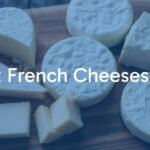
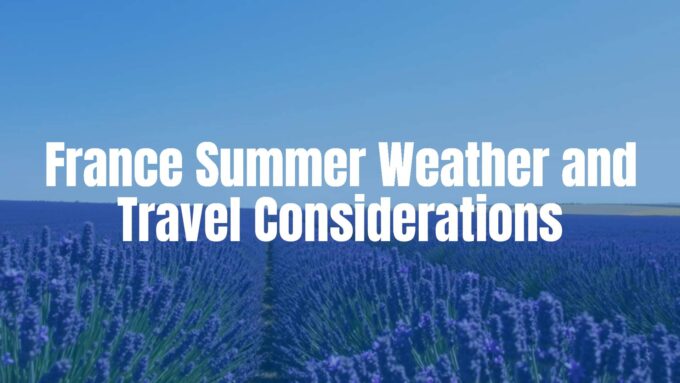
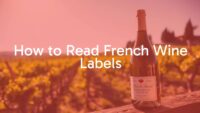

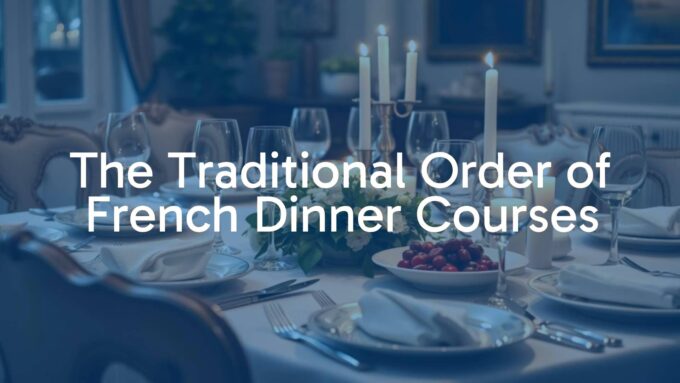
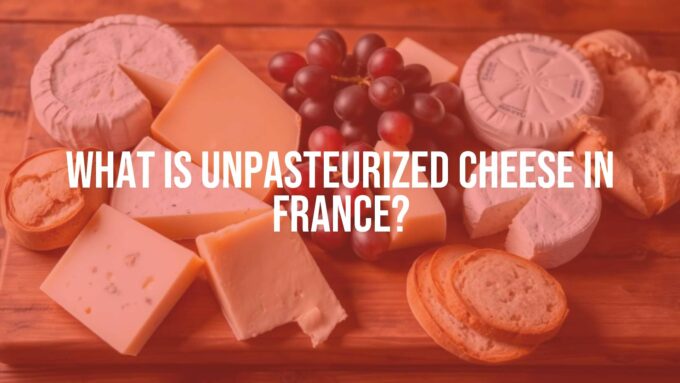
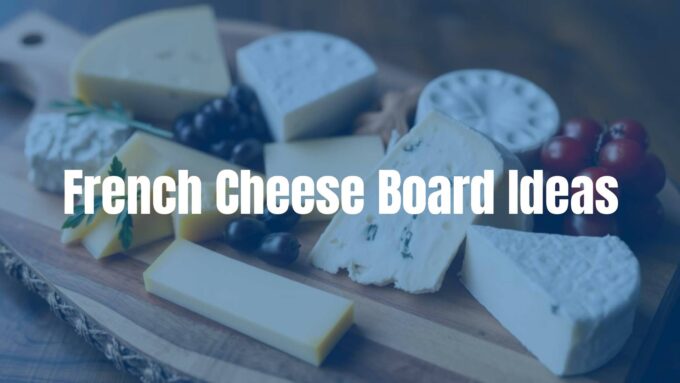
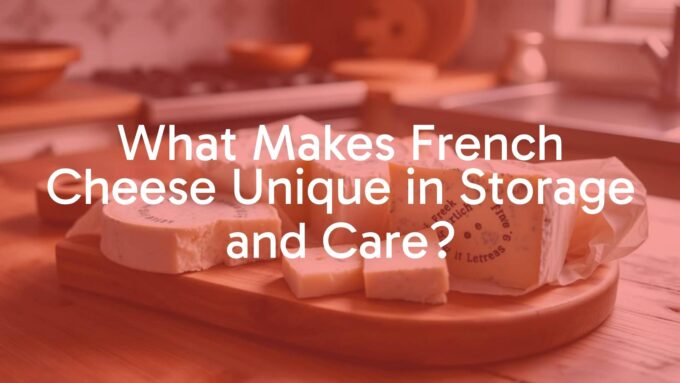



Leave a comment